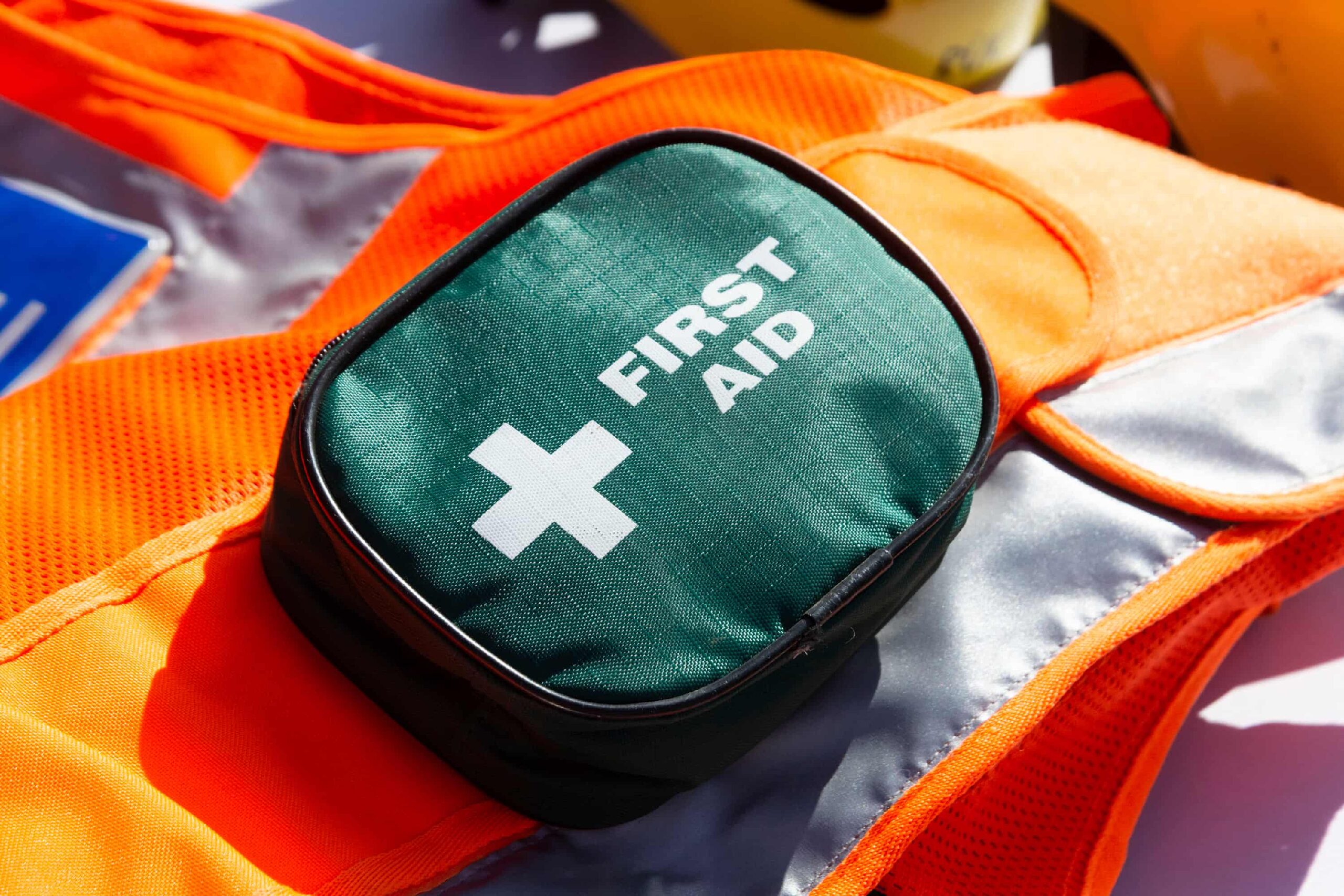There is no definitive list. British Standard BS8599-1:2019 sets out basic first aid kit contents for a range of scenarios and we use these as a basis for our first aid kit contents. The First Aid Regulations 1981 and HSE guidance require all employers to undertake a needs assessment to determine the number and level of training of first aiders, as well as what first aid equipment is necessary in a workplace.
As far back as December 2019 we reported in this Bulletin of the revised HSE guidance that first aid provision in tree work should contain haemostatic dressings and a tourniquet.
These can only be used by those who have been trained, but as the change was over three years ago, i.e., longer than the first aid ticket lasts, everyone that has an in-date first aid ticket suitable for forestry (+F) should now be trained in their use.
On a site recently, an operator suffered a deep penetrating injury. They were carrying a personal first aid kit with haemostatic dressings and used them to stem the bleeding. When the ambulance crew arrived, they commended themfor how they had dressed the wound and left it as it was while being taken to hospital. This operator’s preparedness saved themselves from a more serious situation.
Remember!
• Being prepared for emergencies pays off when a situation occurs.
• Make sure your first aid training includes the use of haemostatic dressings and tourniquets.
• Ensure your first aid kits are fully stocked and all contents in date.
• Carry a personal first aid kit when undertaking tasks where serious injury requiring immediate treatment is more foreseeable, e.g., chainsaw works.



